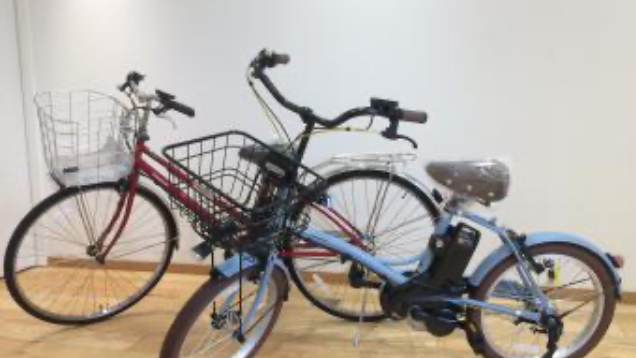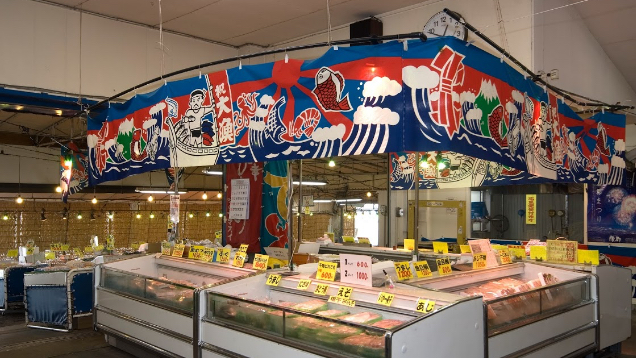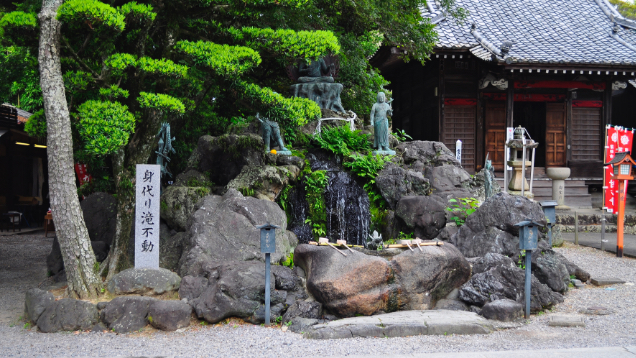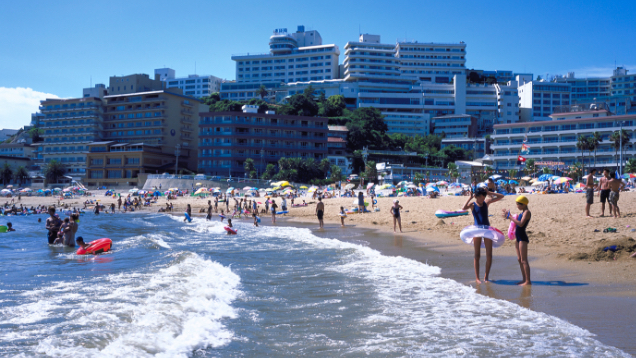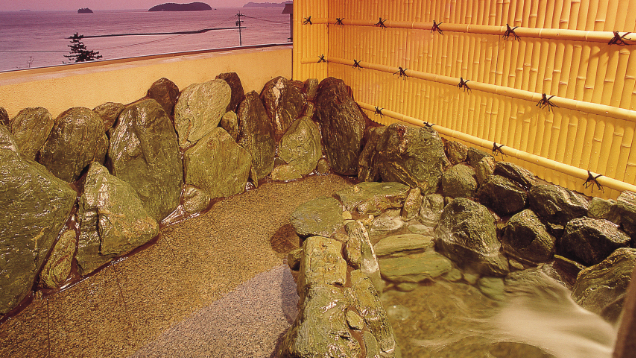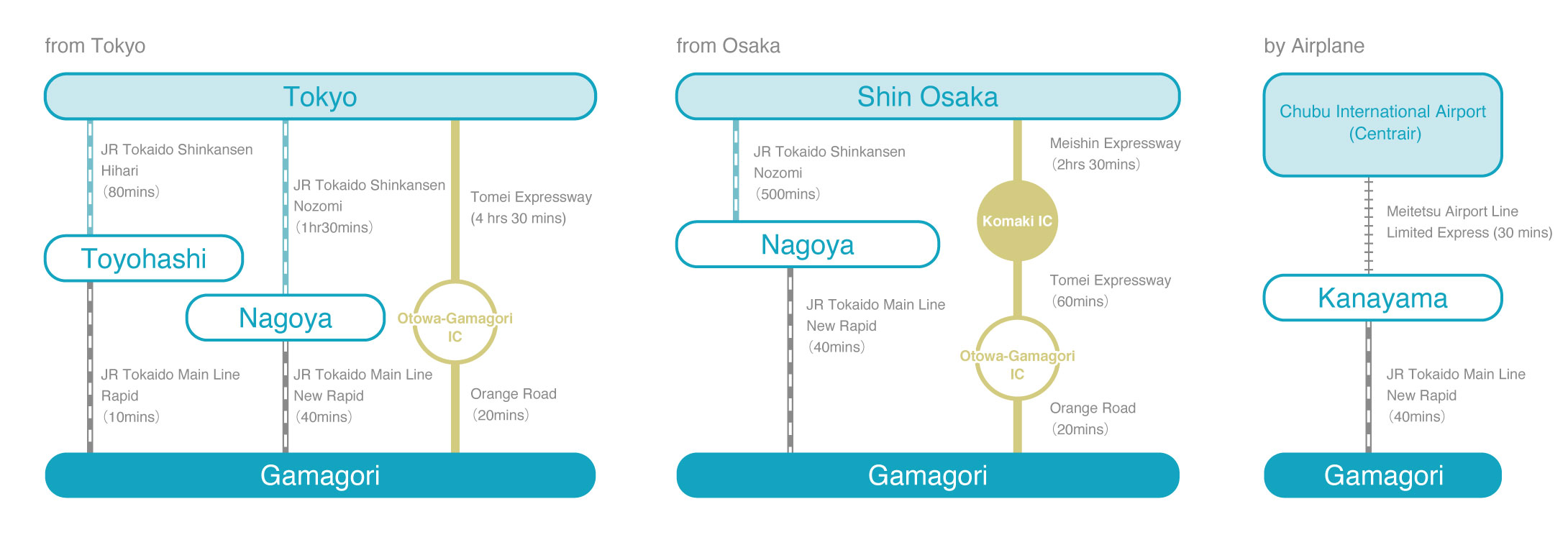
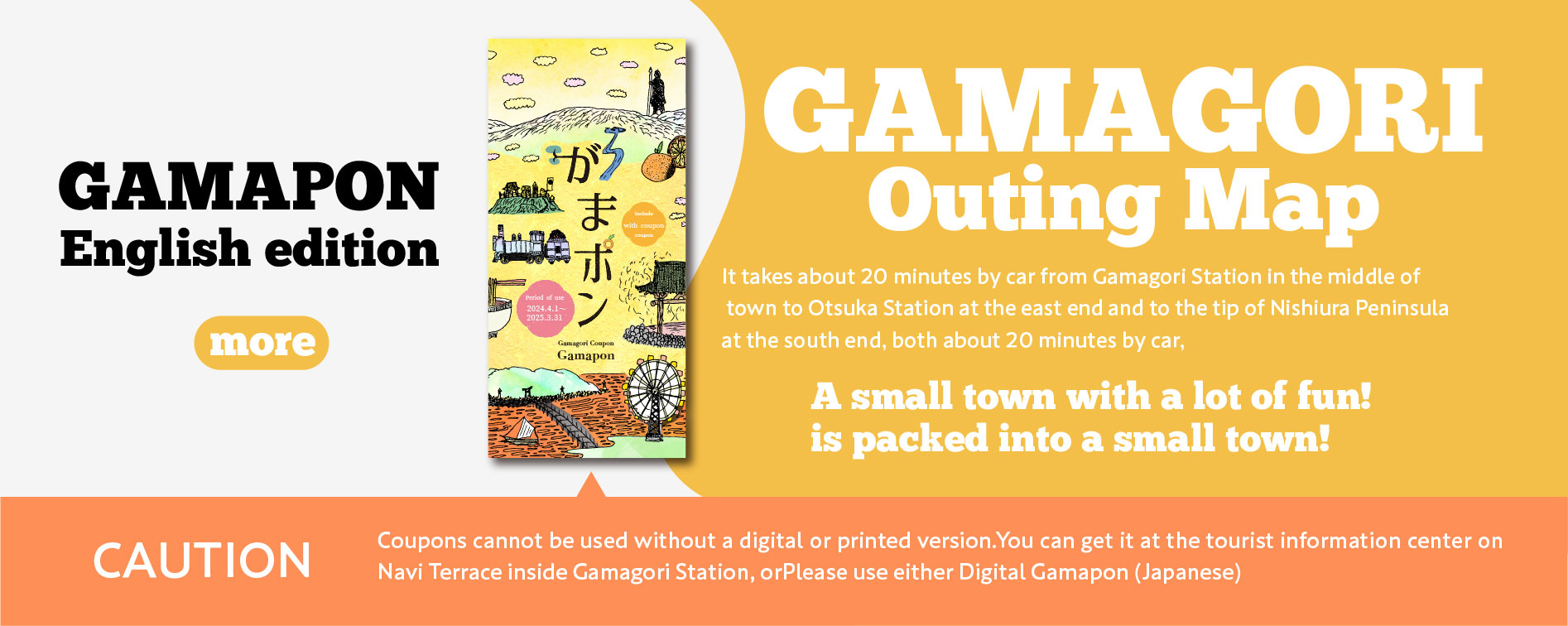
Gamagori, located in Aichi Prefecture in the middle of Japan, is a peaceful port city with a population of around 80,000.
With hot springs, shrines, ryokan, and Japanese cuisine...
Come and experience authentic Japan in this small town.
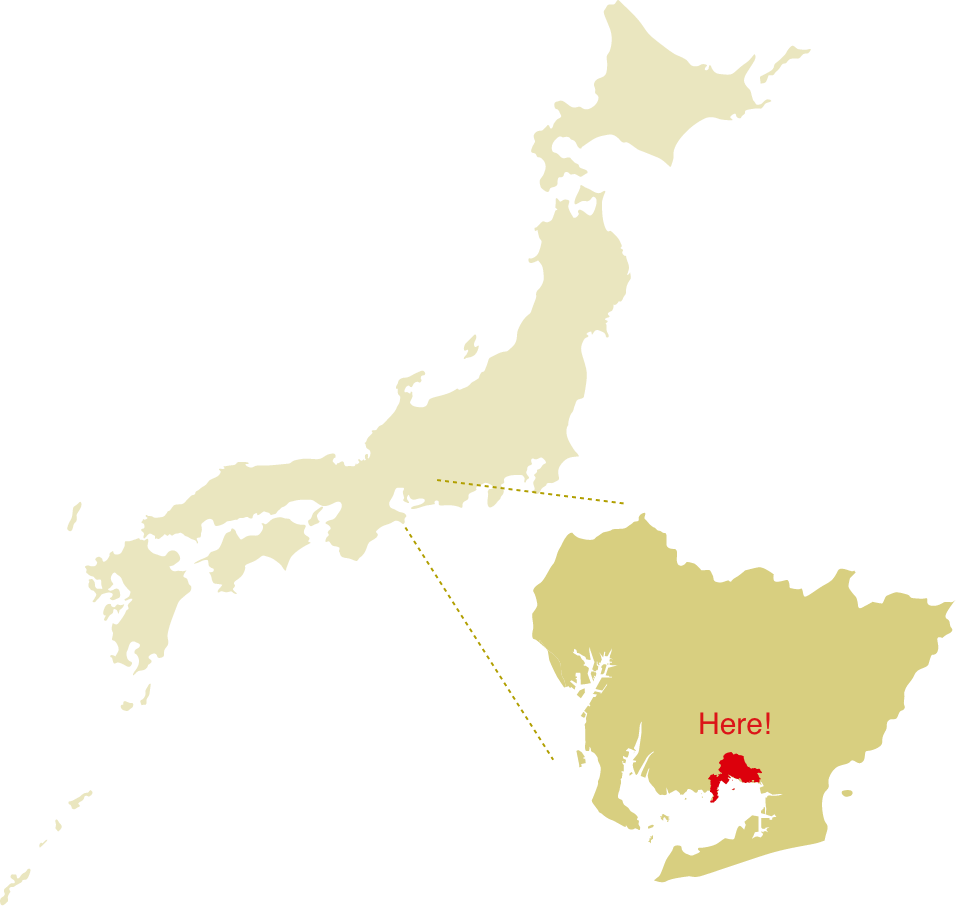
The area around Takeshima is home to many valuable cultural properties, including Takeshima, a national natural monument.
more information about the Takeshima area brochure download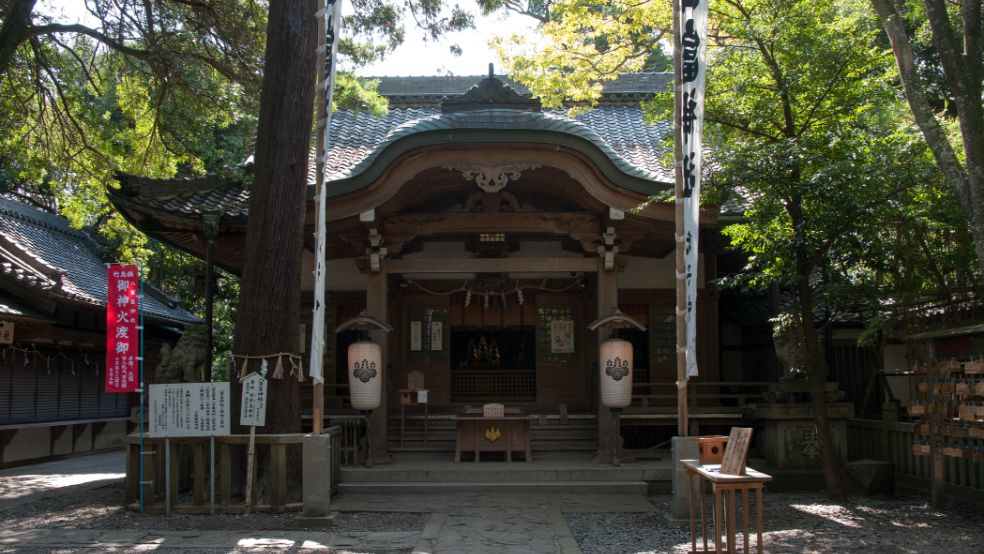
Takeshima, the symbol of Gamagori, is an island connected to the mainland by a 387 meter-long bridge. In the center of the island is Yaotomi Shrine, one of Japan's seven best-known shrines that are dedicated to Benten, the goddess of good fortune, safe childbirth, and matchmaking. How about crossing the bridge and climbing the stone steps to visit this Japanese goddess?
view more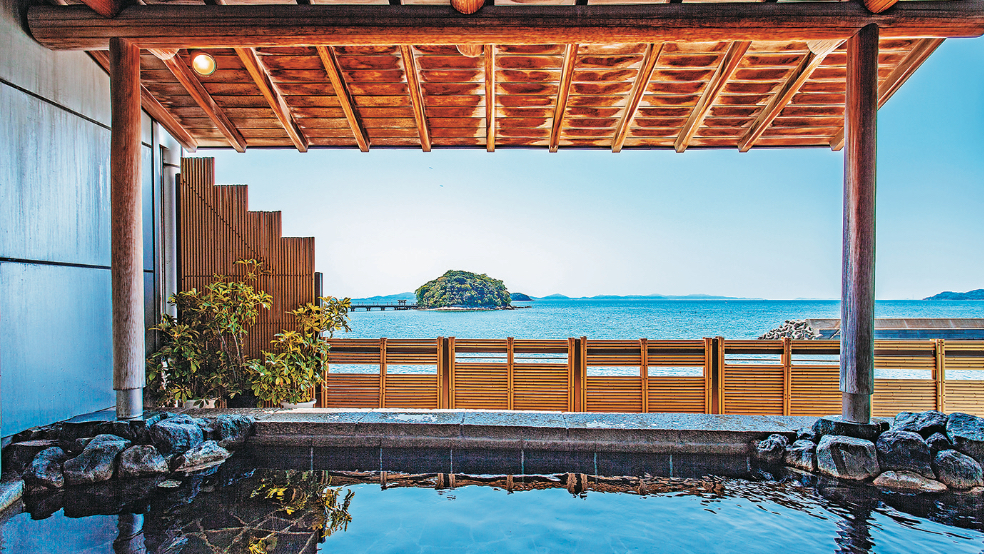
Gamagori is one of Aichi Prefecture's leading hot spring regions, with four hot spring villages: Gamagori Onsen, Miya Onsen, Katahara Onsen, and Nishiura Onsen. With both the ocean and the mountains close by, Gamagori boasts an outstanding location where you can gaze out at the peaceful sea while relaxing in the bathtub, or enjoy views of Gamagori City and Mikawa Bay from the mountaintop.
view more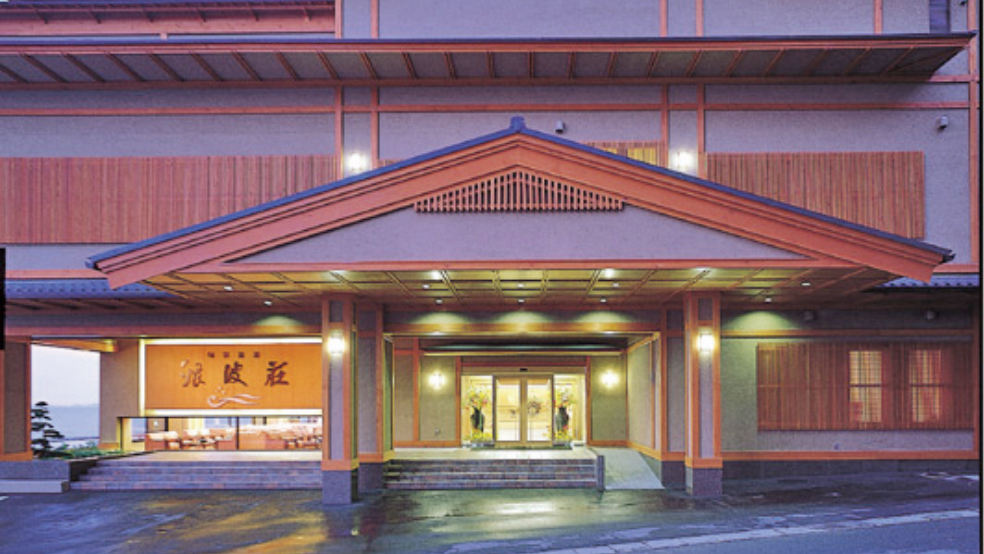
Gamagori is a scenically beautiful hot spring region, beloved since ancient times by travelers including famous writers, as well as poets featured in the 8th century poetry collection the Manyoshu. Many hot spring ryokan (traditional Japanese inns) have been built along the shoreline and up in the mountains so that visitors can enjoy such scenery. Why not try the unique experience of a Japanese hot spring ryokan: taking a dip in a hot spring bath, wearing a yukata robe, and sleeping on a futon on the tatami mat floor?
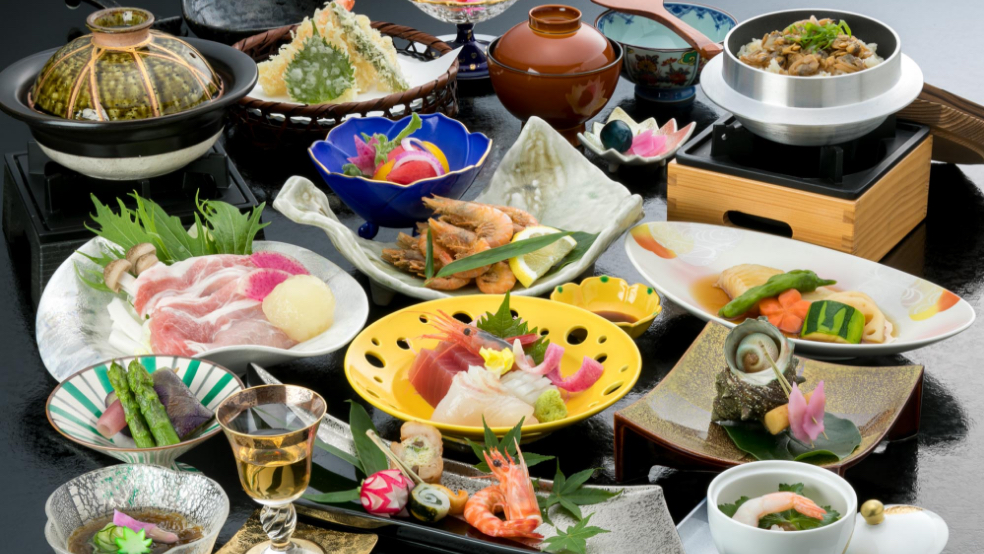
Japanese cuisine, excelling in both taste and presentation, is carefully created to bring out the natural flavors of seasonal local ingredients, such as fresh seafood fished from Mikawa Bay, which unfurls before your eyes. A particular feature of Gamagori is that deep-sea fish, including many luxury foodstuffs, are caught here. Visitors are sure to enjoy Gamagori's famous deep-sea fish cuisine.
view moreA guide to Gamagori's main annual events.
Enjoy this city whenever you visit, all year round.
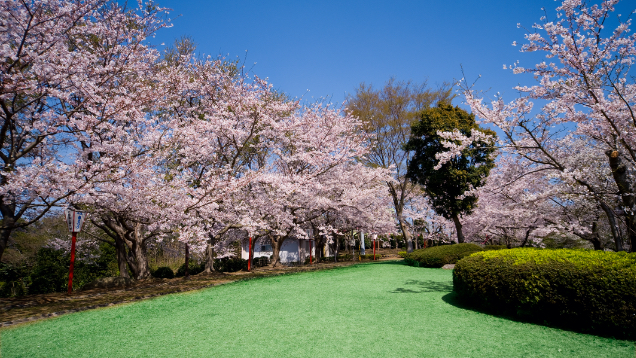
At the Cherry Blossom Festival, which is held at Nishiura Hilltop Park at the peak of the cherry blossom season in early April every year, you can enjoy amazake (sweet mild sake) and mitarashi-dango (sweet rice dumplings) while gazing at the blossoms. With nighttime illuminations during the cherry blossom season, an evening picnic is also recommended.
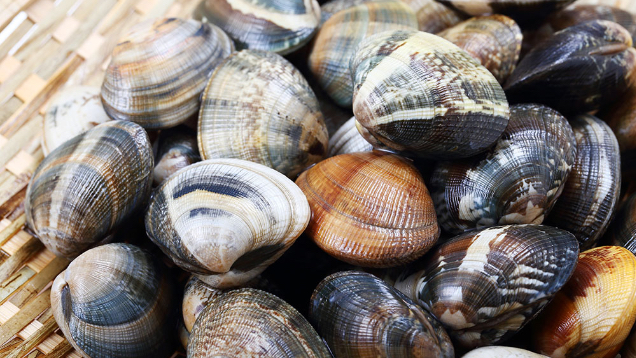
Mikawa Bay, which unfurls before your eyes in Gamagori, is famous for being the biggest production area of clams in Japan. Between March and June, the coast of Gamagori is packed with visitors digging for clams.
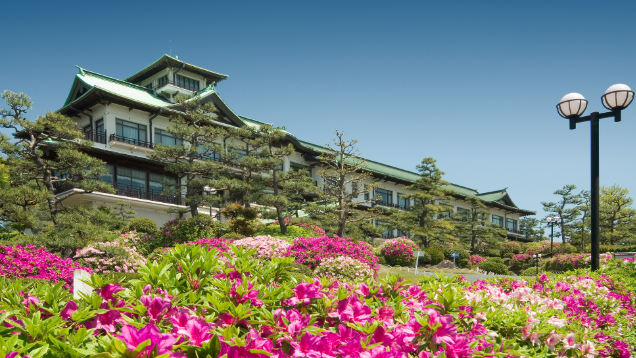
The azalea is designated as the official flower of Gamagori City. The Azalea Festival is held from late April to early May in the garden of the Gamagori Classic Hotel, where you can enjoy the spectacle of around 3,000 blooming azaleas of five varieties.
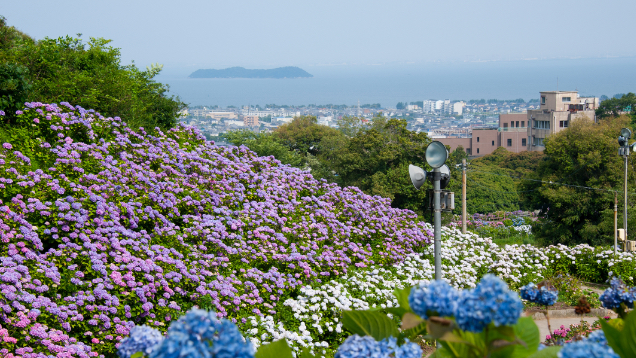
During the month of June every year, the Hydrangea Festival is held at the Hydrangea Village in Katahara Onsen, where around 50,000 hydrangea flowers bloom in profusion. The area is illuminated at night, and if you are lucky, you may be able to see Japanese "Genji" fireflies.
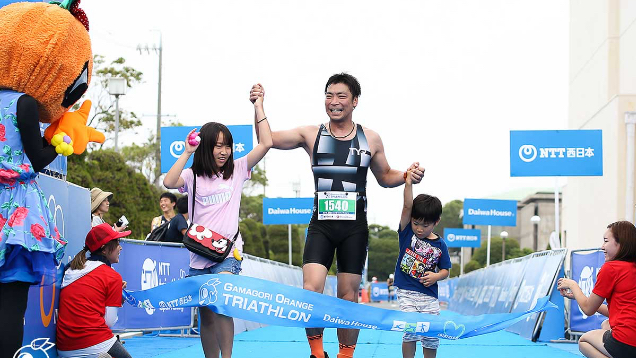
Gamagori's triathlon event features a refreshing route with sweeping views of Takeshima. The various competition categories include Standard, Sprint, Super Sprint, and Para-Triathlon.
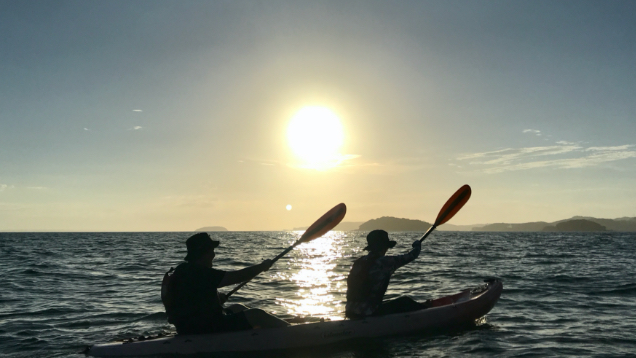
Sea-swimming can be enjoyed at two beaches: Nishiura Palm Beach, and the uninhabited island Mikawa Oshima, to which regular ferries operate only in the summer season. A variety of marine sports, including stand-up paddleboarding, kayaking, wakeboarding, and ocean slacklining are also popular.

Over two days at the end of July, various fun events take place in Gamagori, mainly around the area in front of Gamagori Station. In particular, the Noryo Firework Display, which is held on the evening of the second day, is lively with visitors every year. The huge "Shosanshakutama" fireworks, among the largest on the Pacific Coast, are a must-see.
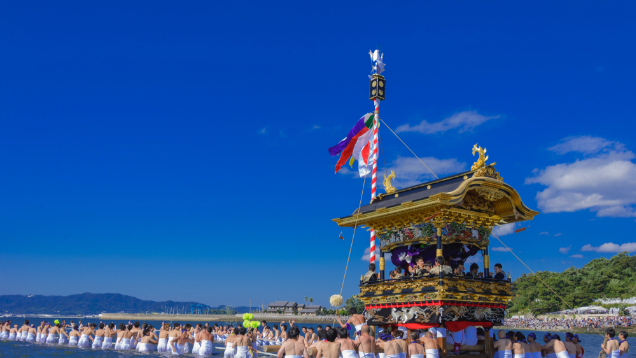
The Miya Festival boasts a history of more than 300 years, originating in 1696 when a villager saw a mysterious divine revelation in his dreams. The focal point of the festival is when a large group of men pull the festival float to the sea and parade through the water.
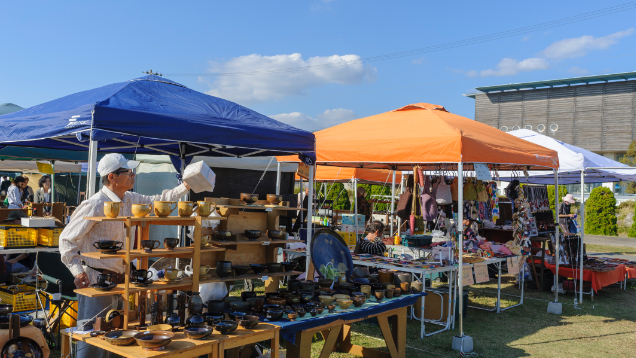
In autumn of every year, craft creators of various different genres including woodwork, glass, and metalwork, gather in Gamagori for this event, which features sales of craftworks and workshops. A delightful time can be enjoyed at the venue, where you can feel a pleasant sea breeze.
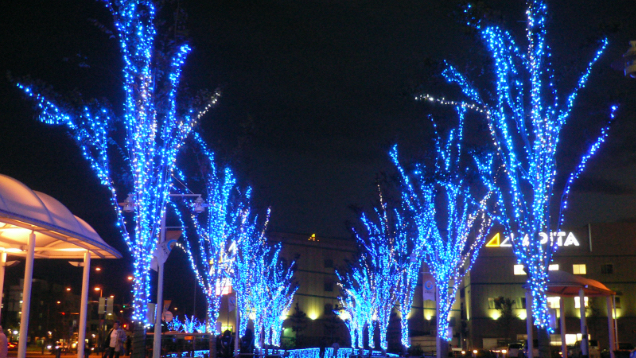
The city of Gamagori, including the area around Gamagori Station, the yacht harbor, and Laguna Ten Bosch, is beautifully lit up by seasonal illuminations.
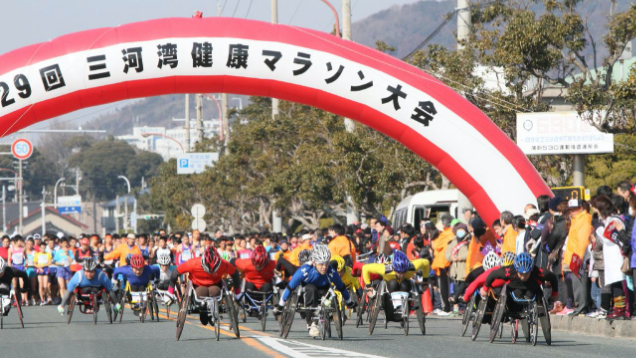
This marathon competition features a refreshing race route, with views of the sea. Popular with many participants from children to senior citizens, runners can choose from two races, 3km and 10km. There is also a section for racing wheelchair users.
The area around Takeshima is home to many valuable cultural properties, including Takeshima, a national natural monument.We will introduce popular areas that you cannot miss when sightseeing in Gamagori.
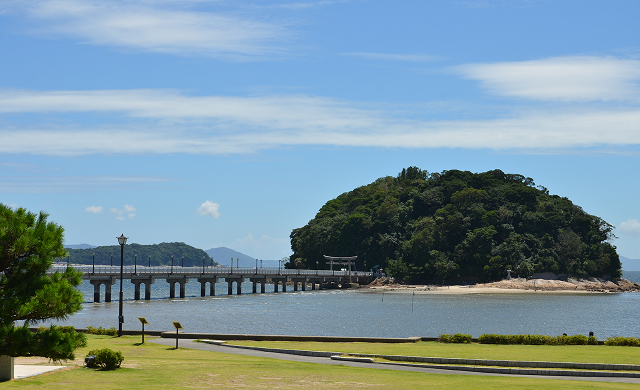
Mikawawan Quasi-National Park was established in 1958 and is the oldest natural park in Aichi Prefecture.
view more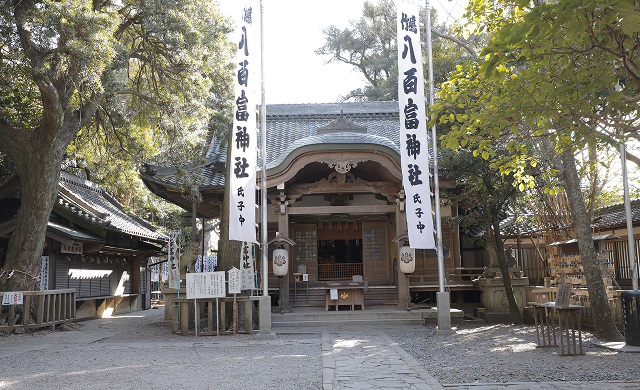
Yaotomi Shrine is a Shinto sanctuary on grounds that cover the entirety of the island of Takeshima, just off the coast of Gamagori.
view more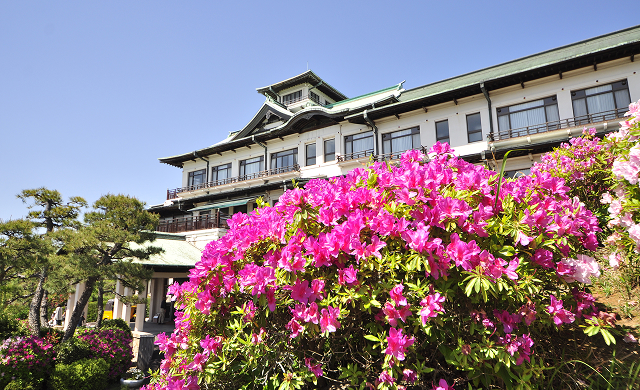
The castle-like Gamagori Classic Hotel makes a dramatic sight on a hill overlooking the island of Takeshima and Mikawa Bay.
view more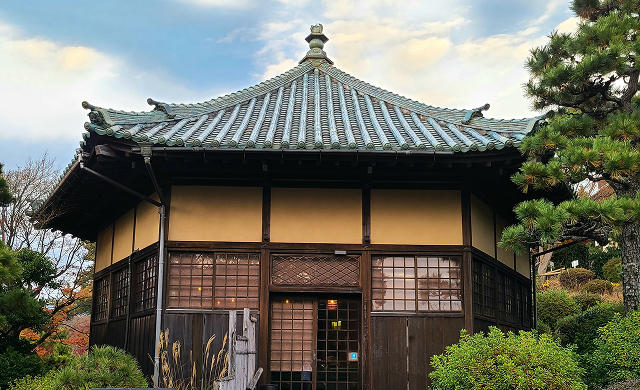
The Rokkakudo (lit, “hexagonal hall”) was built in 1936 as an annex to the Gamagori Hotel, which had opened two years prior.
view more
The building is a registered Tangible Cultural Property. In recent years it housed the Ryotei Takeshima restaurant, and guests have been able to stay the night in it since 2025.
view more
The Oshukutei is a registered Tangible Cultural Property. Guests have been able to stay the night in the building since 2025.
view more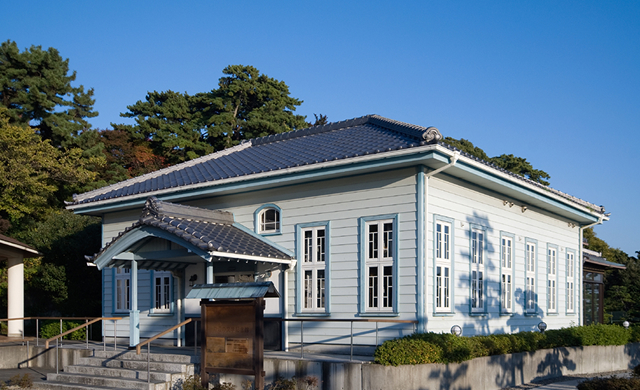
Exhibits at the Seaside Literary Memorial Museum explain how Gamagori became a popular holiday resort for noted writers in the early twentieth century.
view more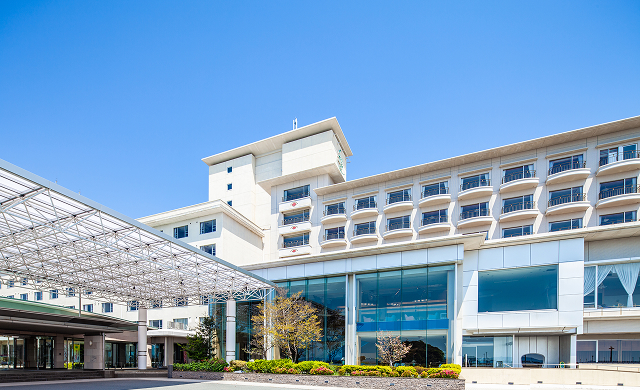
Hotel Takeshima is a spa resort overlooking the island of Takeshima and Mikawa Bay.
view more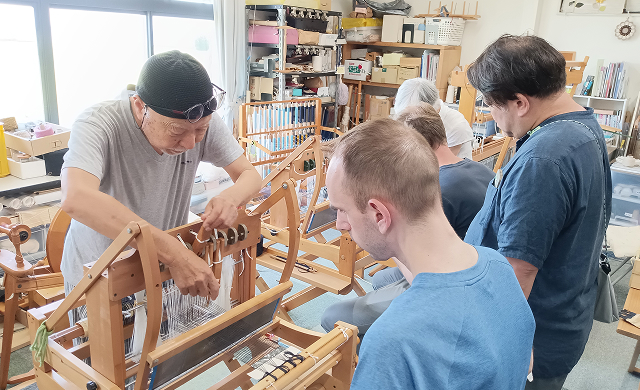
This history is on display at the Takeshima Craft Center, where traditional textile-making techniques can also be experienced.
view more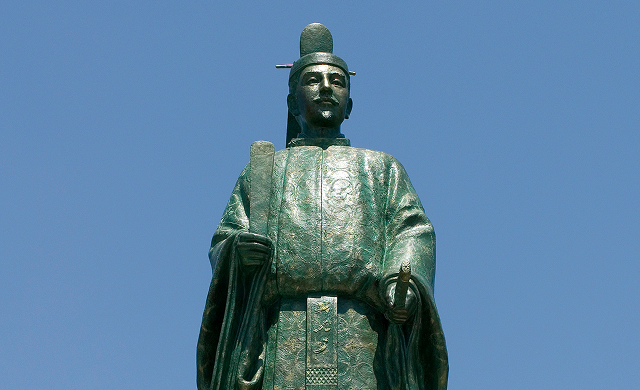
Shunzei is considered the founder of Gamagori and was also responsible for establishing Yaotomi Shrine on Takeshima.
view more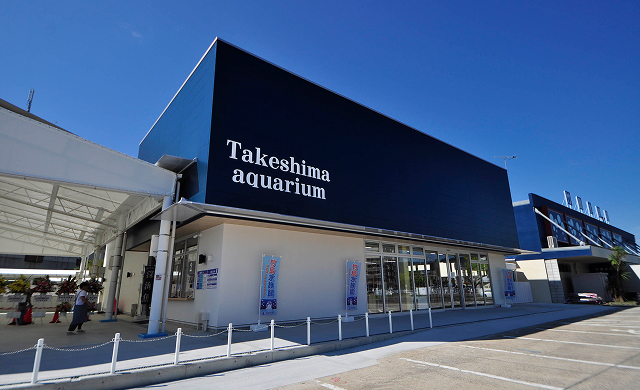
Innovative and interactive displays at the Takeshima Aquarium provide insight into the rich sea life of Mikawa Bay as well as the deep waters farther out in the Pacific Ocean.
view more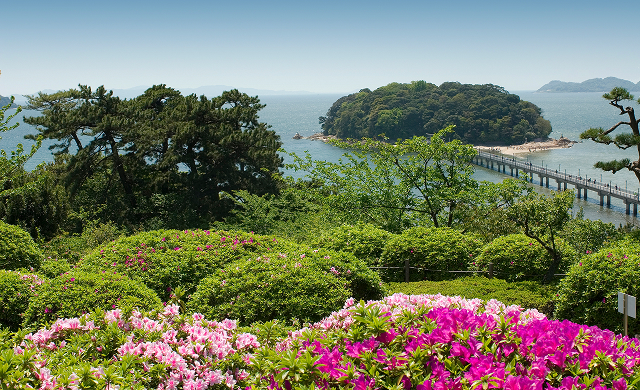
The seaside city of Gamagori in central Aichi Prefecture is a leisure destination noted for its scenery.
view more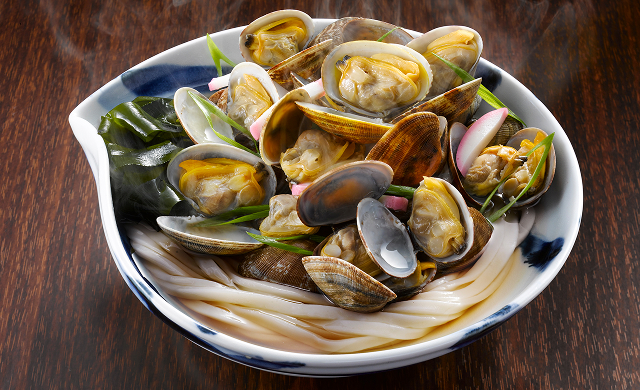
The coastal location and natural environment of Gamagori have fostered a vibrant culinary culture.
view moreIn this classic tour of Gamagori, you can visit Takeshima, the symbol of the city, where all the family can have fun at Takeshima Aquarium, and experience weaving by hand using local Mikawa Cotton. Next, after enjoying fresh seafood and fruit-picking specialty fruits, you can soothe away your tiredness in a relaxing hot spring bath.
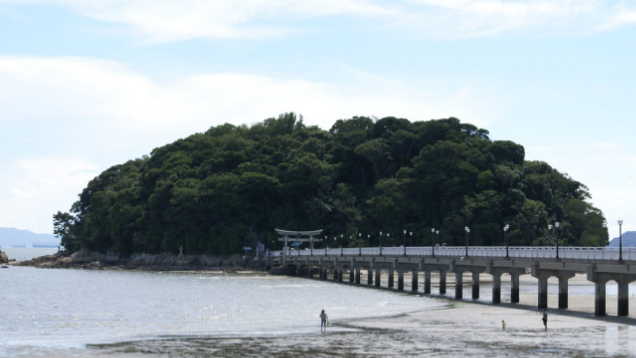
Takeshima, a nationally-designated Natural Monument, is connected to the mainland by a 387 meter-long bridge. In the center of the island is Yaotomi Shrine, one of Japan's seven best-known shrines that are dedicated to Benten, the goddess of good fortune, safe childbirth, and matchmaking.
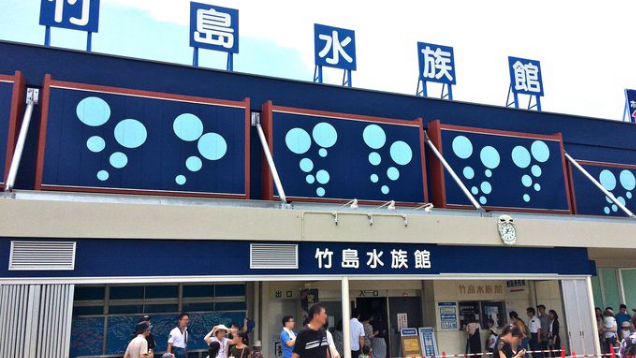
Boasting Japan's largest number of exhibited species of deep sea creatures, as well as some creatures that can only be seen in this aquarium in all of Japan. Popular features include the pop-up explanations that are hand-made by the aquarium keepers, and the "Sawarin Pool", where visitors can directly touch Japanese spider crabs, giant isopods, and other creatures.
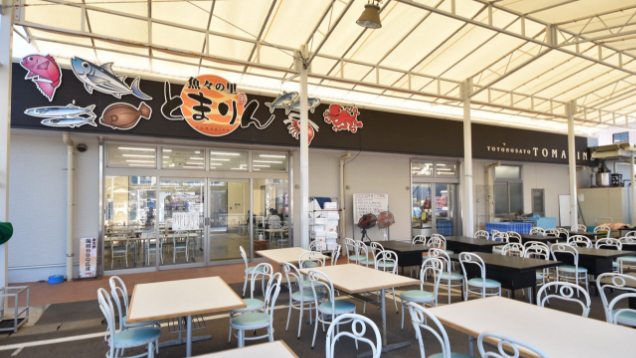
Gamagori is well-known for its availability of delicious deep-sea fish. How about a visit to "Tomarin", a market directly managed by a fish wholesale dealer, where you can enjoy fresh fish local to Gamagori or a rice bowl topped with rare deep-sea fish?
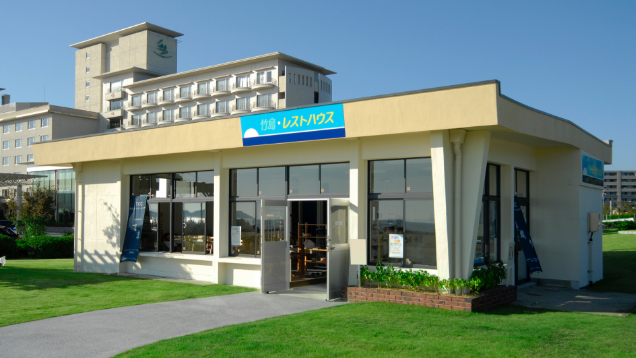
The Mikawa region, which includes Gamagori City, has long been a thriving site of cotton cultivation. The woven cloth produced here is known as "Mikawa Cotton," and has been beloved for many centuries.
At Takeshima Craft Center, you can enjoy weaving your own unique coaster made from cotton grown in the Mikawa region, while gazing out at the island of Takeshima, the symbol of Gamagori.
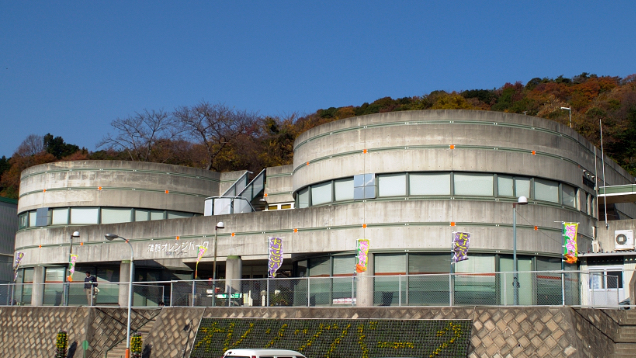
Gamagori is famous as one of Japan's biggest production areas of mikan (tangerine oranges). Seasonal fruit-picking can be enjoyed all year round, with varieties including the local specialty product "Gamagori Mikan", as well as strawberries, grapes and other fruits.
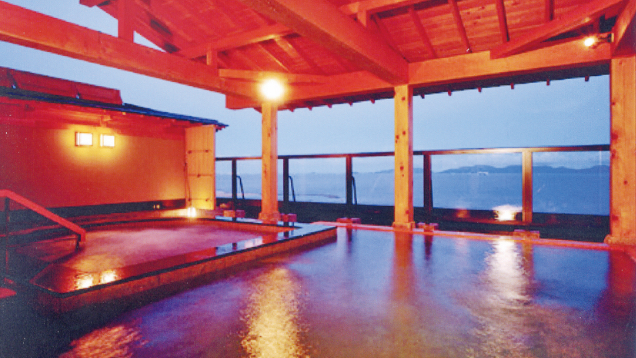
Daytime entry to hot spring baths can be enjoyed casually by anyone, even if you are not an overnight guest of the ryokan.
A relaxing tour at a slow pace, where you can cycle around famous spots by paid electric bicycle rental. How about taking a leisurely tour of Gamagori, with a camera in your hand?
